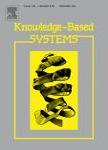版权所有:内蒙古大学图书馆 技术提供:维普资讯• 智图
内蒙古自治区呼和浩特市赛罕区大学西街235号 邮编: 010021

作者机构:Lanzhou Univ Sch Math & Stat Lanzhou 730000 Gansu Peoples R China Lanzhou Univ Sch Informat Sci & Engn Adv Comp Lab Lanzhou 730000 Gansu Peoples R China Hefei Univ Technol Gerontechnol Lab Hefei Anhui Peoples R China Lanzhou Univ Sch Informat Sci & Engn Lanzhou 730000 Gansu Peoples R China SUNY Stony Brook Coll Engn & Appl Sci Stony Brook NY 11794 USA
出 版 物:《KNOWLEDGE-BASED SYSTEMS》 (知识库系统)
年 卷 期:2014年第56卷第0期
页 面:226-239页
核心收录:
学科分类:08[工学] 0812[工学-计算机科学与技术(可授工学、理学学位)]
基 金:National Science & Technology Pillar Program of China [2013BAH19F01] National Natural Science Foundation of China [61073193, 70673030, 90924025] Hefei University of Technology [407-037036, 2012HGZY0031]
主 题:BP neural network Input parameters selection Particle swarm optimization algorithm Wind speed Wind forecasting
摘 要:As a clean and renewable energy source, wind energy has been increasingly gaining global attention. Wind speed forecast is of great significance for wind energy domain: planning and design of wind farms, wind farm operation control, wind power prediction, power grid operation scheduling, and more. Many wind speed forecasting algorithms have been proposed to improve prediction accuracy. Few of them, however, have studied how to select input parameters carefully to achieve desired results. After introducing a Back Propagation neural network based on Particle Swam Optimization (PSO-BP), this paper details a method called IS-PSO-BP that combines PSO-BP with comprehensive parameter selection. The IS-PSO-BP is short for Input parameter Selection (IS)-PSO-BP, where IS stands for Input parameter Selection. To evaluate the forecast performance of proposed approach, this paper uses daily average wind speed data of Jiuquan and 6-hourly wind speed data of Yumen, Gansu of China from 2001 to 2006 as a case study. The experiment results clearly show that for these two particular datasets, the proposed method achieves much better forecast performance than the basic back propagation neural network and ARIMA model. (C) 2013 Elsevier B.V. All rights reserved.